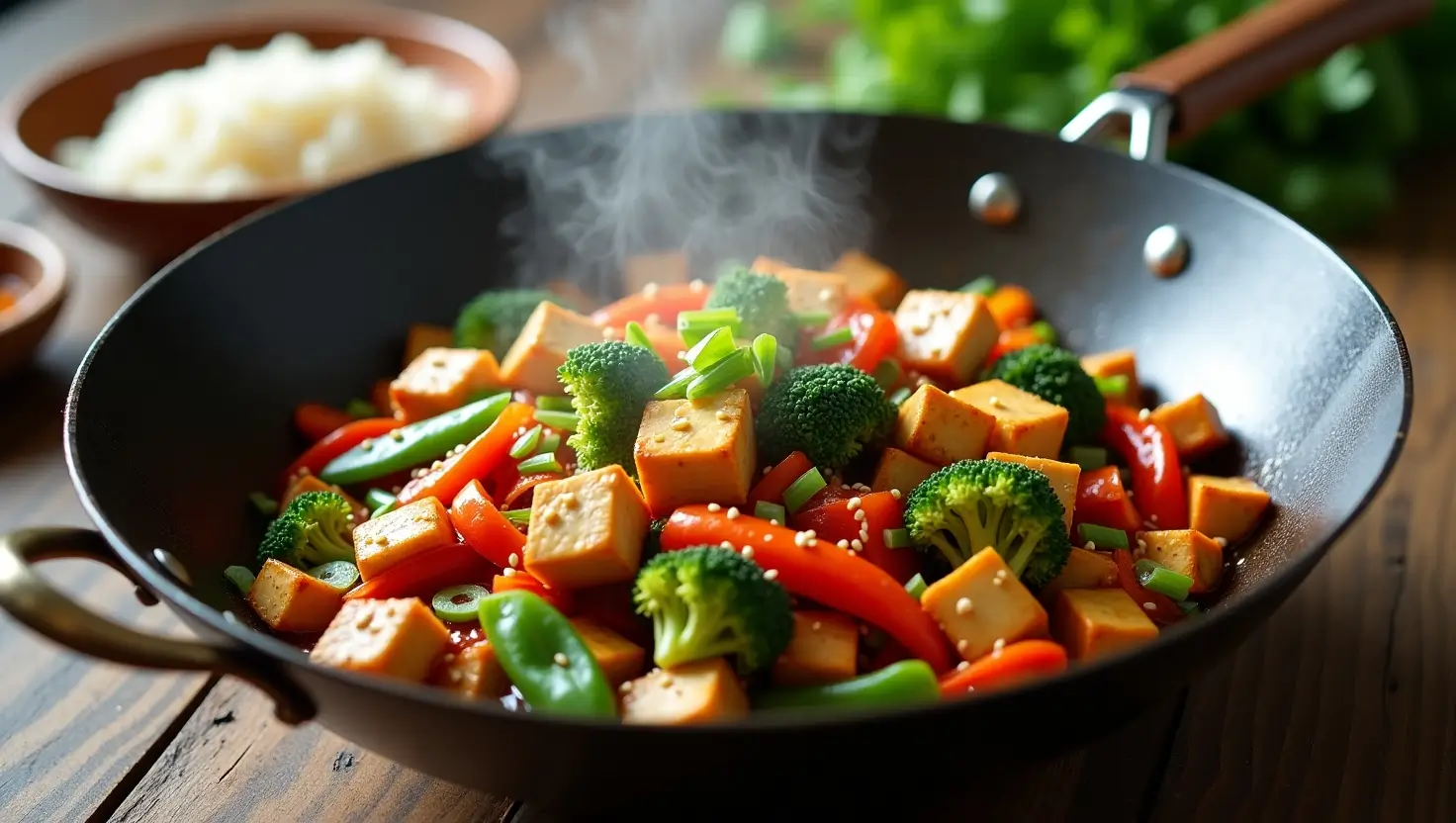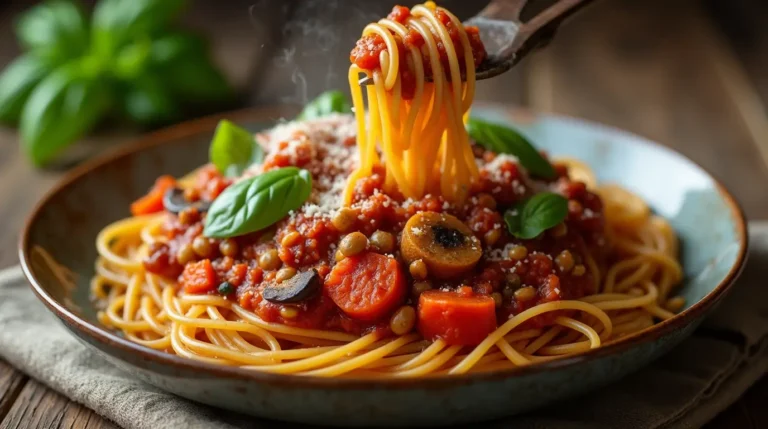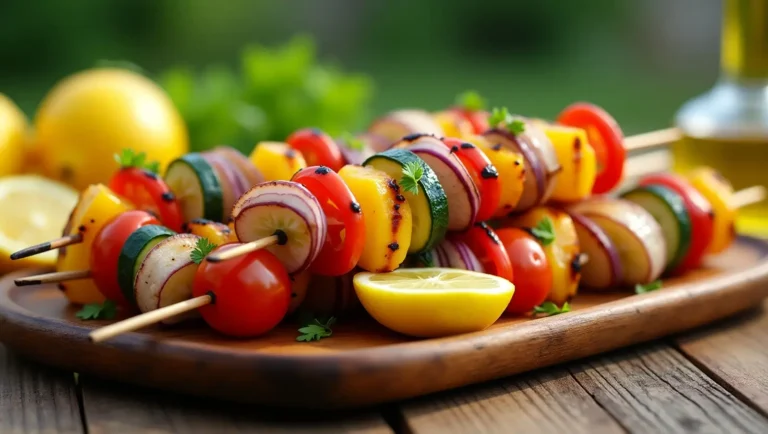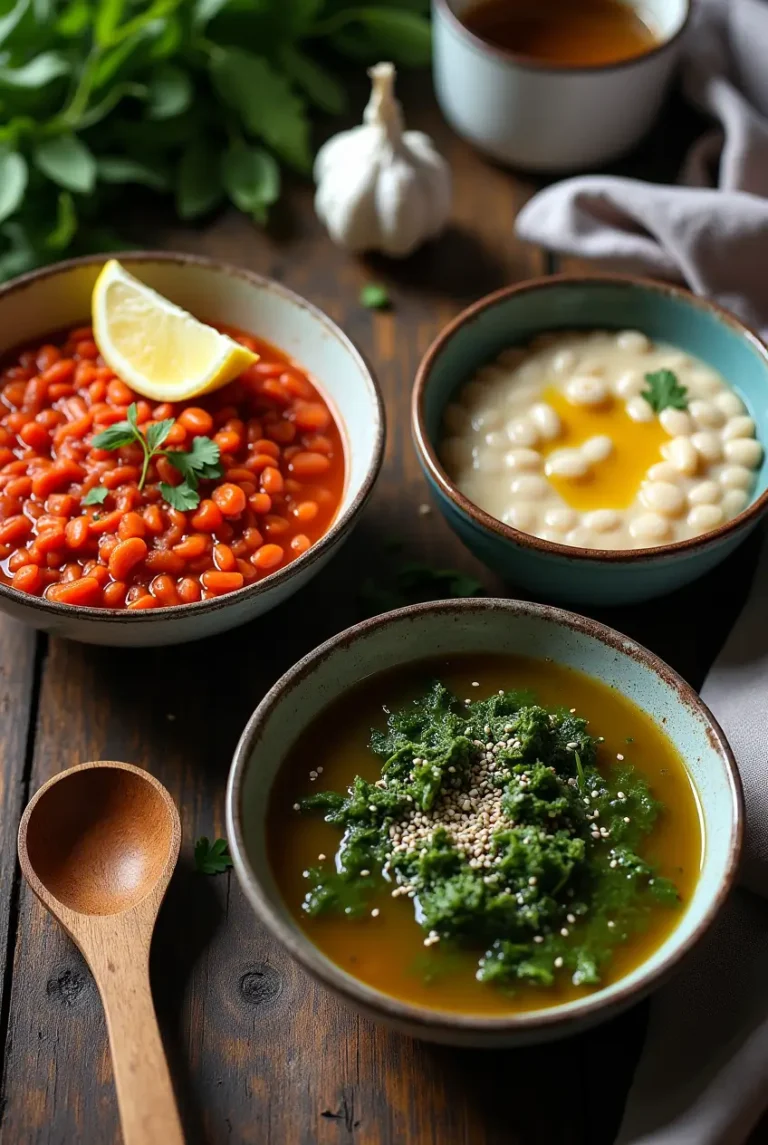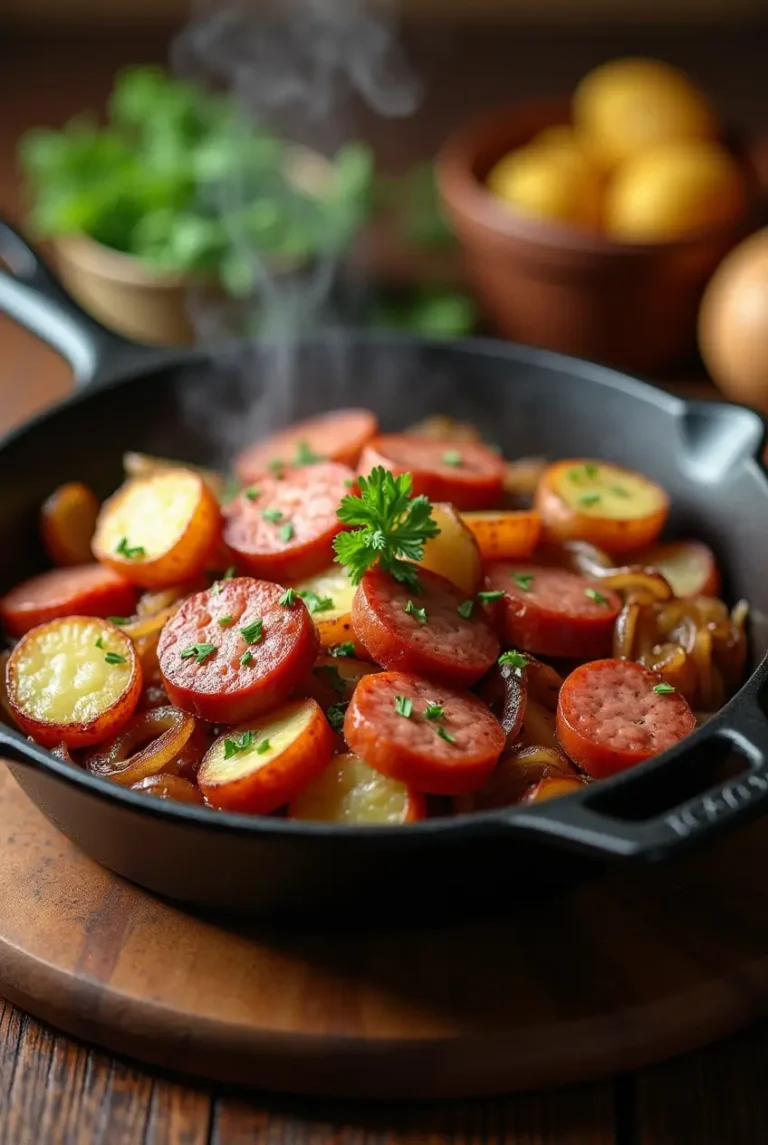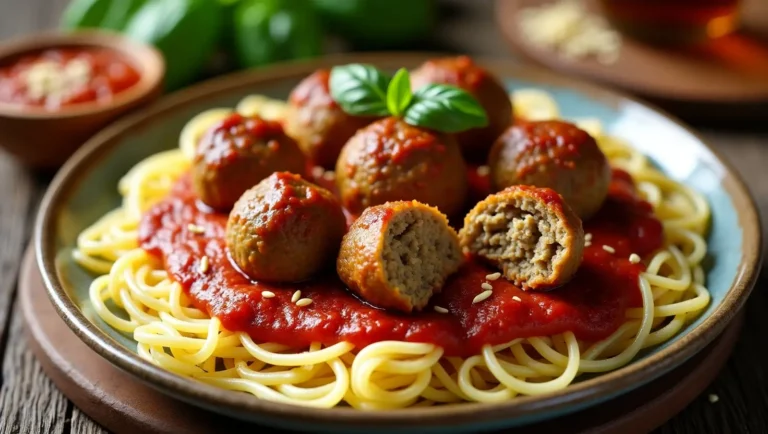Easy Vegetarian Stir Fry Recipe – Quick & Healthy Dinner Idea
Why This Vegetarian Stir Fry Will Become Your Weeknight Hero
You know those evenings when time slips away, hunger strikes, and takeout seems like the only option? Before you grab that menu, let’s talk about a faster, healthier, and more satisfying solution—a vibrant vegetarian stir fry.
This isn’t just another recipe. It’s your secret weapon for busy nights, a foolproof way to pack nutrients into one pan, and a dish so flexible that even picky eaters will ask for seconds. Whether you’re a seasoned home cook or someone who burns toast, this easy vegetarian stir fry will save you time, money, and stress.
Ready to transform your dinner routine? Let’s get cooking.
Table of Contents
Why This Vegetarian Stir Fry Belongs in Your Regular Meal Rotation1. Faster Than Delivery (Yes, Really)
- Most takeout takes 30+ minutes to arrive. This stir fry? 15 minutes, start to finish.
- No waiting, no extra fees—just fresh, hot food on your table.
2. Healthier Without the Hassle
- Skip the greasy, sodium-heavy takeout. Here, you control the ingredients.
- Packed with fiber, vitamins, and plant-based protein, it’s a meal that fuels you.
3. Works With Whatever You Have
- Forgotten veggies in the fridge? Toss them in.
- No tofu? Swap in chickpeas or cashews.
4. One Pan = Minimal Cleanup
- No stacks of dishes—just a single wok or skillet to wash.
Gather Your Ingredients: Simple, Fresh, and Flexible
The Essential Stir Fry Formula
Every great stir fry follows this blueprint:
| Component | What to Use |
|---|---|
| Crunchy Veggies | Bell peppers, broccoli, carrots, snap peas |
| Aromatics | Garlic, ginger, green onions |
| Protein | Tofu, tempeh, edamame, or chickpeas |
| Sauce | Soy sauce, sesame oil, rice vinegar, a touch of sweetness |
| Extras | Toasted sesame seeds, crushed peanuts, chili flakes |
Pro Tip: Slice veggies uniformly so they cook evenly—no mushy broccoli next to crunchy carrots!
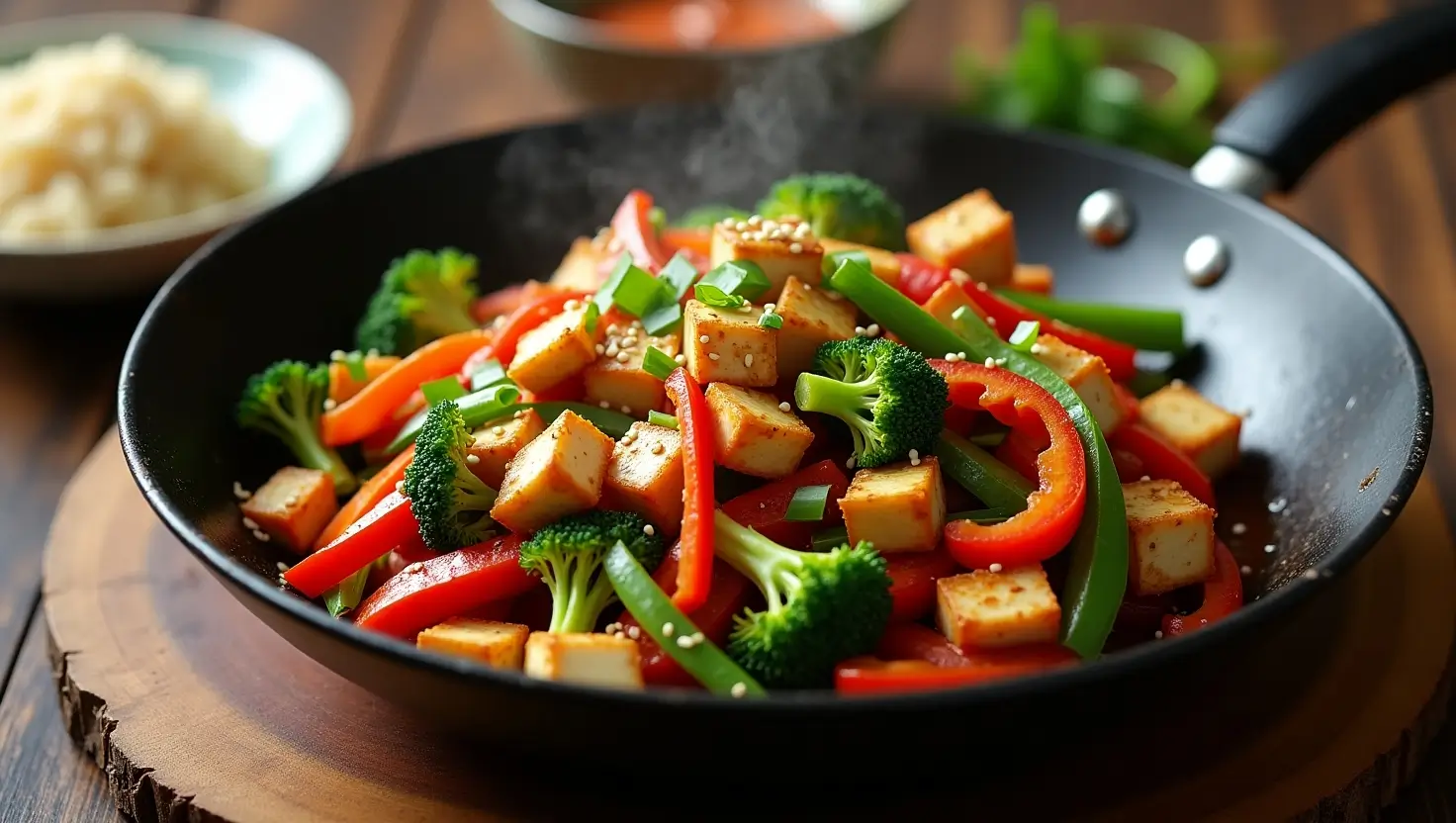
Step-by-Step: How to Make the Perfect Vegetarian Stir Fry
Step 1: Prep Like a Pro (5 Minutes)
- Chop all veggies into bite-sized pieces.
- Press tofu (if using) for 10 minutes to remove excess water, then cube.
- Mix the sauce:
- 3 tbsp soy sauce
- 1 tbsp sesame oil
- 1 tbsp rice vinegar
- 1 tsp maple syrup (or honey)
- 1 minced garlic clove
- ½ tsp grated ginger
Step 2: Stir-Fry with Confidence (10 Minutes)
- Heat your pan (wok or large skillet) over high heat. Add 1 tbsp oil.
- Sizzle the aromatics—garlic and ginger—for 20 seconds until fragrant.
- Add veggies in order of hardness:
- Carrots and broccoli first (3 minutes).
- Softer veggies like peppers and snap peas next (2 minutes).
- Toss in protein (tofu, tempeh, or chickpeas) and cook until lightly browned.
- Pour sauce over everything, stir well, and let it thicken for 1 minute.
Step 3: Serve with a Flourish
- Top with sesame seeds, green onions, or a squeeze of lime.
- Pair with rice, quinoa, or noodles—or enjoy it straight from the pan.
Next-Level Customizations: Make It Your Own
Protein Swaps for Extra Variety
- Tofu (crispy or soft)
- Tempeh (for a nutty, hearty bite)
- Chickpeas (no prep needed!)
- Cashews (for crunch and richness)
Sauce Twists to Keep It Exciting
- Spicy Kick – Add sriracha or chili garlic paste.
- Peanut Butter – Mix 1 tbsp into the sauce for a Thai-inspired flavor.
- Teriyaki Twist – Swap soy sauce for teriyaki and add pineapple chunks.
Veggie Combinations to Try
- Classic Mix: Bell peppers, broccoli, carrots
- Mushroom Lovers: Shiitake, baby corn, snow peas
- Rainbow Bowl: Purple cabbage, yellow squash, red bell peppers
Why This Dish Is a Nutritional Powerhouse
- Fiber-Rich: Helps digestion and keeps you full longer.
- Packed with Antioxidants: Colorful veggies = more nutrients.
- Low-Calorie, High-Flavor: Perfect if you’re watching portions.
- Plant-Based Protein: Supports muscle health without meat.
Fun Fact: A study from the American Journal of Clinical Nutrition found that plant-based meals can reduce inflammation and improve heart health.
Avoid These Common Stir Fry Mistakes
- Overcrowding the Pan → Veggies steam instead of sear. Cook in batches if needed.
- Skipping High Heat → A lukewarm pan = soggy stir fry. Crank it up!
- Overcooking Veggies → They should stay crisp, not mushy. Taste as you go.
- Underseasoning → Adjust with a pinch of salt or extra soy sauce at the end.
FAQs: Your Stir Fry Questions, Answered
Can I Use Frozen Vegetables?
Yes! Just thaw and pat dry to avoid excess water.
How Do I Store Leftovers?
Keep in an airtight container for up to 3 days. Reheat in a pan (not a microwave) to retain texture.
Is This Recipe Gluten-Free?
Swap soy sauce for tamari or coconut aminos.
What’s the Best Oil for Stir-Frying?
Use avocado, peanut, or sesame oil—they handle high heat without burning.
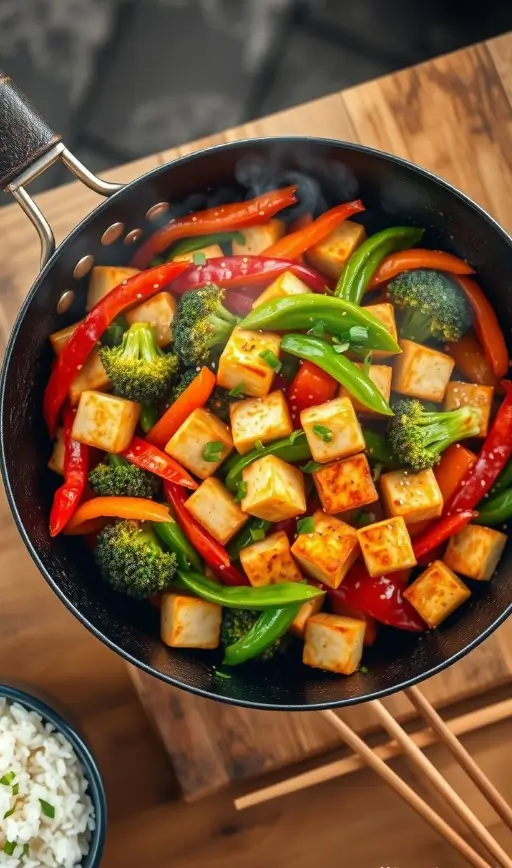
Final Thoughts: A Dish You’ll Crave Again and Again
This vegetarian stir fry isn’t just a meal—it’s a lifesaver. Quick, healthy, endlessly adaptable, and so delicious you’ll forget it’s good for you. The next time hunger strikes on a hectic night, skip the takeout and grab your wok instead.
Your Turn: What’s your favorite stir-fry combo? Share in the comments—we’re always hunting for new ideas! 👇

